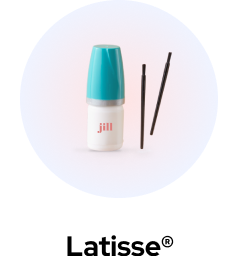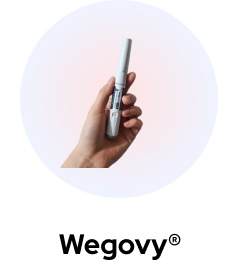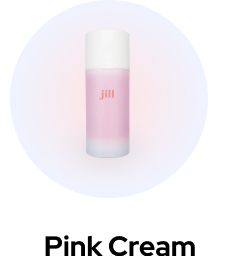Welcome to our easy-to-follow guide on the epinephrine auto-injector, commonly known as an EpiPen. This device is essential for people with severe allergies because it can quickly treat life-threatening reactions known as anaphylaxis.
In this guide, we’ll explain how the auto-injector works, when to use it, and what side effects it might have. Whether you’re someone who needs to carry an EpiPen, a caregiver, or just someone interested in learning more, this information will help you understand and feel more confident about handling emergency situations.
What is the Epinephrine Auto-Injector?
The epinephrine auto-injector, commonly referred to as an EpiPen, is a medical device used to deliver a measured dose of epinephrine, also known as adrenaline, in the event of a severe allergic reaction, such as anaphylaxis.
Designed for quick and easy use, this life-saving tool can be administered by non-medical personnel, making it essential for individuals at risk of severe allergies to carry with them at all times.
The auto-injector’s mechanism allows it to inject the epinephrine directly into the muscle, providing rapid relief from extreme allergic symptoms by constricting blood vessels, which increases blood pressure, and relaxing airways to improve breathing.
To fully understand how epinephrine combats severe allergic reactions and why it’s the critical active ingredient in EpiPens, visit our detailed guide on epinephrine. This resource will give you a deeper insight into its mechanism of action and its vital role in emergency medical care.
What are the Uses of Epinephrine Auto-Injector?
The epinephrine auto-injector is primarily used to treat anaphylaxis, a severe, potentially life-threatening allergic reaction that can occur quickly and without warning. It is essential for individuals with known severe allergies to foods, insect stings, medications, or other allergens.
The auto-injector provides a rapid dose of epinephrine, helping to reverse the dangerous symptoms of anaphylaxis, such as swelling of the throat, wheezing, severe asthma, hypotension, and shock.
By administering epinephrine early during an allergic reaction, the auto-injector helps stabilize the individual’s condition and can buy crucial time while seeking emergency medical care. It is a critical component of emergency response kits for those at risk and is recommended for immediate use at the first signs of a severe allergic reaction.
Allergies That Require an EpiPen
An EpiPen, or epinephrine auto-injector, is recommended for individuals who are at risk of anaphylaxis, a severe allergic reaction that can be life-threatening. Common triggers for such reactions include allergies to foods such as peanuts, tree nuts, shellfish, and fish; insect stings from bees, wasps, or hornets; certain medications; and latex.
People who have had a previous anaphylactic reaction or those with a family history of severe allergies are often prescribed an EpiPen. It’s crucial for these individuals to carry an EpiPen at all times, as the onset of anaphylaxis can be sudden and severe, requiring immediate treatment to prevent serious health complications or death.
Food Allergies
Food allergies are a common trigger for severe allergic reactions that may require the use of an EpiPen. Foods such as peanuts, tree nuts, shellfish, fish, milk, eggs, soy, and wheat can cause anaphylaxis in susceptible individuals.
Symptoms can rapidly escalate from mild itching or a rash to severe breathing difficulties and shock, making immediate access to an epinephrine auto-injector critical.
Insect Stings
Stings from bees, wasps, hornets, and yellow jackets are notorious for causing anaphylactic reactions in allergic individuals. The venom from these insects can trigger a body-wide allergic reaction that can be fatal if not treated promptly.
Carrying an EpiPen allows for immediate intervention, which is essential for preventing a more severe outcome.
Medication Allergies
Certain medications can also provoke severe allergic reactions. Common culprits include antibiotics like penicillin, as well as nonsteroidal anti-inflammatory drugs (NSAIDs) and anesthesia drugs.
Individuals known to be allergic to specific medications are often advised to carry an EpiPen as a precautionary measure to manage unexpected reactions, which can include respiratory distress, hives, and swelling.
Latex Allergy
Latex, found in many medical and non-medical products, can trigger reactions ranging from skin irritation to anaphylaxis in sensitized individuals.
Those with a latex allergy may need to use an EpiPen if they are exposed to latex-containing products such as gloves, balloons, or medical devices and develop severe symptoms. This immediate access to epinephrine can be life-saving during an anaphylactic reaction caused by latex exposure.
Side Effects of Epinephrine
- Increased Heart Rate: Often causes palpitations or an unusually fast heartbeat.
- High Blood Pressure: Can temporarily increase blood pressure, potentially leading to headaches or a feeling of lightheadedness.
- Nervousness or Anxiety: Users may experience feelings of nervousness or anxiety after administration due to epinephrine’s stimulant effects.
- Tremors: Mild shaking or tremors, especially noticeable in the hands.
- Dizziness or Headaches: Can occur due to changes in blood pressure and blood flow.
- Nausea or Vomiting: Some individuals might feel sick or vomit after using epinephrine.
- Sweating: Increased perspiration is another common side effect.
- Weakness: A feeling of general weakness or fatigue may follow the adrenaline rush.
- Breathing Difficulty: Although epinephrine helps to open airways, some people may experience respiratory difficulty due to its effects on the muscles surrounding the airways.
How to Use Epipen Auto-Injector
- Prepare for Injection:
- Remove the EpiPen from its protective carrying case.
- Hold the EpiPen with the orange tip pointing downward.
2. Remove the Safety Cap:
- With the other hand, remove the blue safety cap by pulling it straight off. Ensure you do not touch the orange tip or bend the cap.
3. Position the EpiPen:
- Hold the EpiPen in a fist with the orange tip pointing down.
- Position the orange tip against the outer thigh. You can administer the injection through clothing if necessary.
4. Inject the Dose:
- Press down firmly on the EpiPen until it clicks, indicating the injection has begun.
- Hold firmly against the thigh for 3 seconds to ensure the full dose is delivered.
5. Remove and Dispose:
- Remove the EpiPen from the thigh.
- The orange tip will extend to cover the needle. Observe the viewing window; if the indicator is visible, the dose has been delivered.
- Place the used EpiPen back into its protective case and dispose of it according to local regulations. Do not reuse.
After learning how to use an EpiPen, test your knowledge and readiness to handle an emergency involving severe allergies with our interactive epinephrine quiz. This quiz will help you assess your understanding and ensure you’re prepared to act quickly and effectively.
When to Use an EpiPen
An EpiPen should be used immediately when signs of a severe allergic reaction, or anaphylaxis, appear. These symptoms may include difficulty breathing, swelling of the lips, tongue, or throat, severe hives, dizziness, rapid heartbeat, or a feeling of impending doom.
Other signs include gastrointestinal symptoms such as vomiting, diarrhea, or intense abdominal pain.
Dosage for Epinephrine Auto Injector
Selection of the appropriate dose of epinephrine is determined according to patient body weight and is described in Table 1. Each EPIPEN or EPIPEN JR® (epinephrine injection, USP) Auto-Injector (or their authorized generics) contains a single dose of epinephrine.
Since the doses of epinephrine delivered from EPIPEN and EPIPEN JR Auto-Injector (or their authorized generics) are fixed, consider using other forms of injectable epinephrine if doses lower than 0.15 mg are deemed necessary. The prescriber should carefully assess each patient to determine the most appropriate dose of epinephrine.*
Auto-Injector | Epinephrine Concentration | Patient Weight |
Epinephrine, USP Auto-injector 0.3 mg | 0.3 mg (0.3 mL) | >=30kg (>=66 pounds) |
Epinephrine, USP Auto-injector 0.15 mg | 0.15 mg (0.3 ML) | 15-30 kg (33-66 pounds) |
Overdose Information for Epinephrine Auto Injector
Overdosing on epinephrine from an auto-injector, such as an EpiPen, can lead to severe side effects and potentially life-threatening complications. Symptoms of an epinephrine overdose may include extremely high blood pressure, a sudden and severe headache, blurred vision, an irregular or pounding heartbeat, tremors, and severe anxiety.
What Should You Know About Storage and Disposal of This Medication?
Proper storage and disposal of an EpiPen are essential to ensure its effectiveness when needed and to maintain safety. An EpiPen should be stored at room temperature, away from light, and in its original protective case to prevent damage. It should not be exposed to extreme heat or cold, so avoid leaving it in a car or near heat sources.
Regularly check the expiration date on the EpiPen, as expired injectors may not work effectively. Regarding disposal, used or expired EpiPens should be handled carefully to avoid accidental needle sticks. After use, the safety cap does not reattach, but the needle will automatically retract into the safety guard. It’s advisable to bring used EpiPens to a doctor’s office, hospital, or pharmacy that participates in a disposal program.
Never throw an EpiPen in household trash or recycling bins. Being knowledgeable about these practices ensures that the EpiPen is safe and ready to use when needed while also respecting environmental and safety regulations.
Key Takeaways
- Critical for Severe Allergies: The epinephrine auto-injector is an essential device for individuals at risk of severe allergic reactions, or anaphylaxis. It’s designed to quickly deliver a dose of epinephrine, reversing symptoms such as throat swelling, difficulty breathing, and severe drop in blood pressure.
- Immediate Use is Crucial: The EpiPen should be used at the first signs of anaphylaxis. Prompt administration is key to managing the reaction effectively and can be life-saving. It’s advised to always carry an EpiPen if you have known severe allergies and to ensure that friends and family know how to use it.
- Proper Handling and Storage: Epinephrine auto-injectors must be stored at room temperature, away from light and extreme temperatures. They should be easily accessible in case of an emergency. Regular checks of the expiration date are necessary to ensure the device is effective when needed.
- Side Effects and Overdose Awareness: While the use of an EpiPen can be life-saving, it is not without potential side effects such as increased heart rate, anxiety, and headaches. Awareness of the symptoms of overdose, such as extremely high blood pressure and severe headache, is important for users to manage use appropriately and seek medical attention when needed.
Frequently Asked Questions
Does Epipen Auto-Injector Interact with Other Drugs You are Taking?
Yes, the EpiPen auto-injector can interact with other drugs you may be taking. It’s particularly important to be cautious if you’re on medications that affect heart rate or blood pressure, such as beta-blockers, or antidepressants like MAO inhibitors, as these can either reduce the effectiveness of epinephrine or enhance its effects, leading to potential complications.
Is Epinephrine Safe to Use?
Yes, epinephrine is safe to use when administered correctly and for the intended purpose of treating severe allergic reactions, such as anaphylaxis. It is the first-line treatment for these life-threatening conditions and can be lifesaving.
What Class of Drug is Epinephrine?
Epinephrine belongs to a class of drugs known as adrenergic agonists, also referred to as sympathomimetics. These drugs work by activating the adrenergic receptors in the body, which are part of the sympathetic nervous system. Epinephrine specifically targets both alpha and beta-adrenergic receptors, which helps in managing severe allergic reactions by increasing blood pressure, reducing swelling, and opening up the airways.












 (US)
(US)